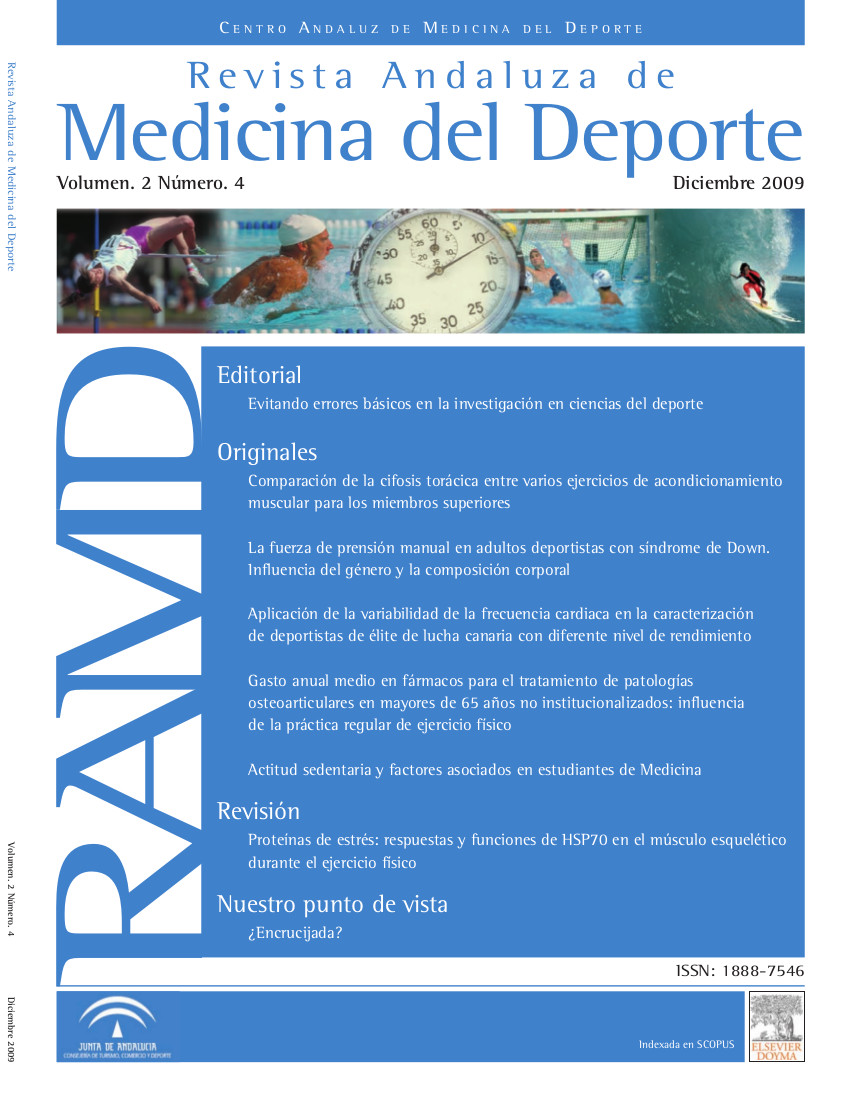Comparison of thoracic kyphosis among muscle conditioning exercises for the upper limbs
Abstract
Objective. To measure sagittal thoracic curvature when performing various muscle strength exercises for upper limbs compared to the standing thoracic kyphosis.
Method. A total of 150 young males (average age: 22.3 ± 6.1 years) were asked to perform several exercises in random order for the upper limbs: standing biceps curl, seated row with anterior trunk restrained, triceps pushdown, and latissimus dorsi pulldown behind the neck position. Thoracic kyphosis was measured in relaxed standing at the end of the concentric phase of the seventh repetition with a Unilevel inclinometer. The thoracic kyphosis in relaxed standing had also been measured previously. For standing thoracic kyphosis, the subjects were assigned to one of three groups (group 1, < 40°, n = 51; group 2, 40-50°, n = 56; and group 3, > 50°, n = 43).
Results. The mean values of thoracic kyphosis in the exercises were higher than the thoracic kyphosis in standing, except for the seated row with trunk restrained, which showed the lowest values. The subjects of group 1 achieved greater increases of thoracic kyphosis when performing the exercises.
Conclusions. Thoracic kyphosis when performing strength exercises for upper limbs is significantly higher than thoracic kyphosis in standing, especially when the subjects have more reduced values in this position.


